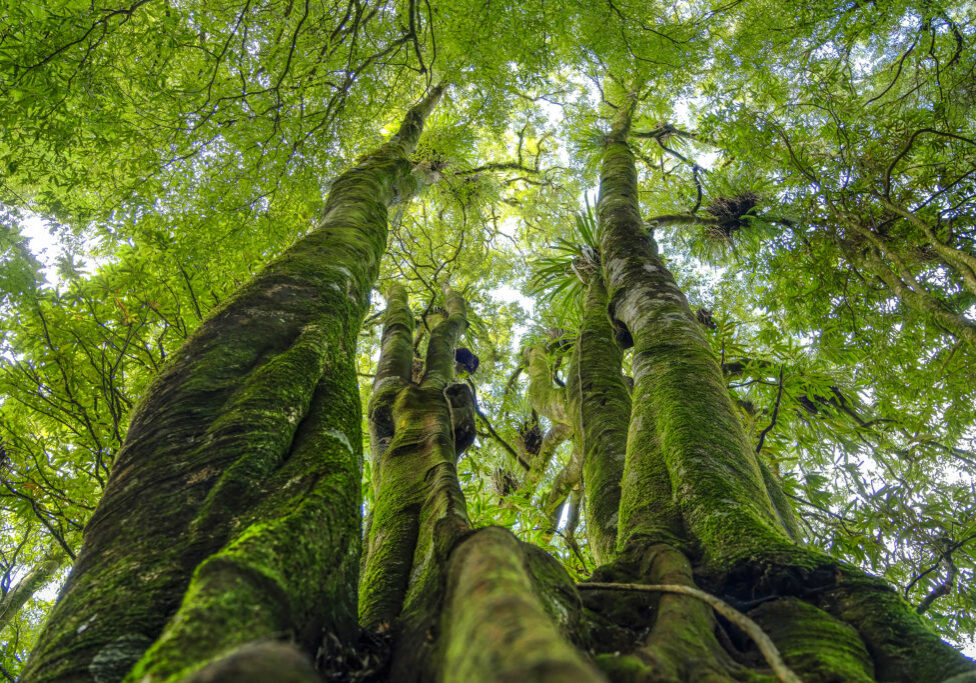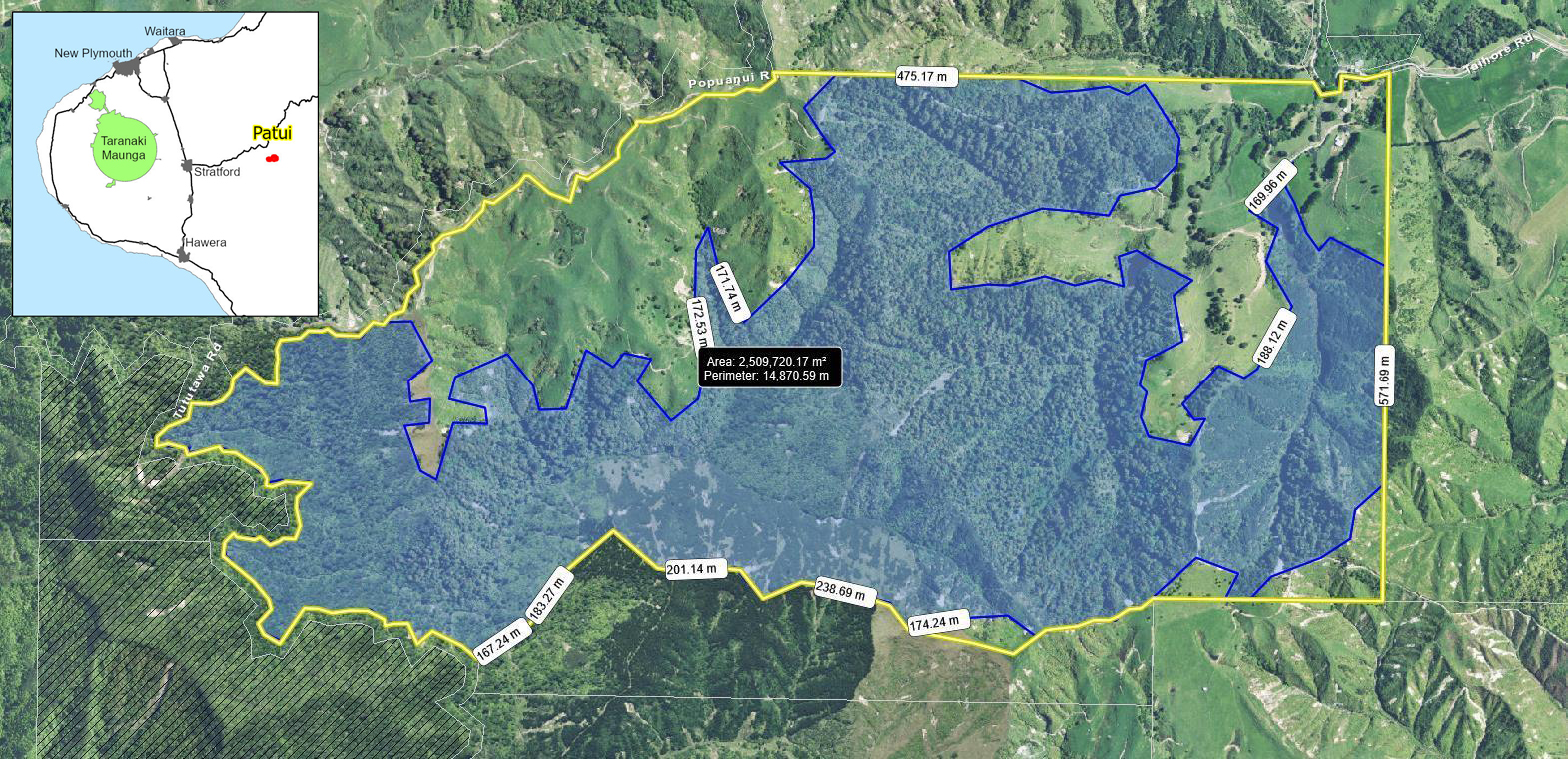Patui Reserve

Location
Patui Reserve is located approximately 22 kms east of Stratford near Makahu in east Taranaki. The site lies within the Matemateaonga Ecological District and Patea River catchment. At the western end the remnants are connected to adjacent native forest including the Tututawa Conservation Area and Tututawa Local Purpose Reserve. Other nearby protected areas include the Waitiri Scenic Reserve and Popuanui Conservation Area. The map below shows Patui in yellow with forest habitat shown in blue.

Background
Following a successful fundraising campaign we reached our goal of raising $1.7 million to fund the purchase of the Patui forest reserve at the end of 2022. This was a tremendous achievement, enabling one of the largest purchases (in dollar amounts) the Trust has ever made. An unprecedented $1.1 million came from donations, approximately $370,000 from Air New Zealand match funding, and the balance from bequests. These figures are phenomenal, and we are so grateful to everyone who donated.
Description
This reserve covers 361 hectares of native forest and land in need of restoration. The forest remnants cover approximately 250 hectares and are a mix of original and cut over lowland old forest with smaller areas of modified regenerating native vegetation (mainly manuka) in places.
The area had been in private ownership for a long time. It’s a special place, typical of the ancient lowland forests which were once found all over this region. Clearly the past owners of this land have appreciated the bush too as it has not been intensively farmed and about half of the property still consists of mature native forest. Two manmade wetlands are also present on the forest margin and provide a small area of wetland habitat at the site.
Flora and Fauna
Large old forest areas within the block contain occasional large emergent canopy forest trees such as rimu and kahikatea. The main canopy is dominated by tawa and rewarewa mixed with miro, matai, totara, maire, northern rata and hinau. Lower stature vegetation includes pigeonwood, mapou, mahoe and tree ferns. The block also contains some areas of regenerating native scrub in relatively good condition.
A very exciting discovery at Patui is the presence of long-tailed bats. The habitat at Patui is perfect for them, as they prefer to roost in large, old trees. Very few people get to see long-tailed bats – they are not much bigger than your thumb and fly very fast – but at Patui you can sometimes spot them at dusk zipping along the forest edge as they hunt for insects.
Patui is also home to diverse bird life. In addition to the tui, fantail and morepork which thrive in the forest, rarer species such as New Zealand falcon, North Island robin, whitehead, grey duck and New Zealand dabchick have all been observed in recent times. Even kiwi, which were thought to have been lost from this area, were once again discovered here in May 2022! This variety of bird life underlines the importance of the remaining forest at Patui and the opportunity we have to manage and protect it to ensure its survival long into the future.
Plans
As always, purchasing the reserve is just the start – we are actively managing the area to restore the forest, control pests and enhance the habitat to ensure that native plants and wildlife can flourish. An extensive planting project is underway with 12ha planted in 2022 and more to come in 2024.
No dogs are allowed in this wildlife reserve.
No hunting without the express permission of the Native Forest Restoration Trust.
Access to this site is remote and includes poorly maintained gravel roads. 4WD is strongly recommended. Entry is at your own risk.

